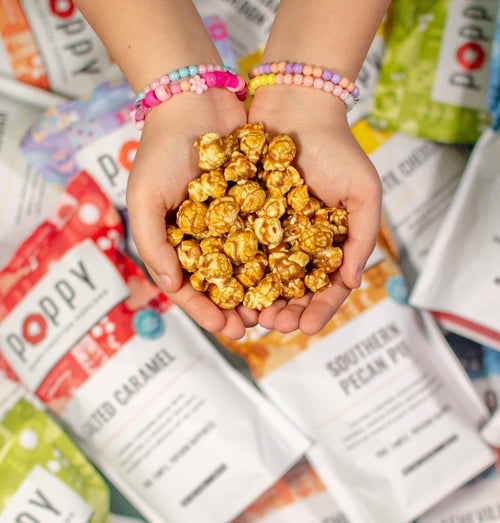
I didn't even know this fruit existed—the largest native, edible one in the U.S.— until a few years ago. That's why I was so excited to talk with Andrew Moore, who literally wrote the book on pawpaws.
 Pawpaw: In Search of America's Forgotten Fruit is chock full of background on and recipes for this amazing edible, one that we can find while walking around Appalachian woods.
Pawpaw: In Search of America's Forgotten Fruit is chock full of background on and recipes for this amazing edible, one that we can find while walking around Appalachian woods.Unfortunately, I live about a hour and a half from the nearest Appalachian woods. After my below chat with Andrew, I knew I had to get my hands on some pawpaws, so I turned to the internet and ordered a bunch online.
As soon as they get here, I'll tell you all about my first bite. In fact, I hope you'll leave a comment below, sharing your pawpaw encounters and telling me what to do with mine.
In the meantime, enjoy this interview, in which Andrew schools me on America's forgotten fruit.
*
TR: Okay, so I've made my confession. Until recently, all I knew about pawpaws came from a famous song—that they grow in a patch and you can put them in your pocket. So let me start by asking what is a pawpaw, and why should we all know about it?
AM: Good question. Pawpaws are the largest edible fruit native to the U.S., and they taste like a mixture of mango and banana with a custard-like texture. There’s nothing else like it in the American woods. And although it’s an ancient plant, native to our region, it actually belongs to the tropical Custard Apple family. It was once better known across the eastern U.S., and it wasn’t until the middle of the last century that Americans stopped eating, or even knowing about the pawpaw. And so I’ll argue that on these merits alone--and the fact that we wrote songs about it!--we ought to know more.
TR: If I’m not mistaken, the pawpaw season is short, right?
AM: Pawpaw season is about 30 days. In the Mid-Atlantic and Ohio River Valley, it is roughly the month of September. Now some trees ripen earlier, some ripen later, so there’s opportunity to expand the season in your home orchard if you select the right trees. But even with any extension efforts, yes, it’s a short season.
[caption id="attachment_11439" align="alignright" width="320"]
 These beauties will soon be mine![/caption]
These beauties will soon be mine![/caption]TR: So we all better hustle. When we get one, how do we eat it?
AM: My favorite way is to cut it in half and eat it with a spoon. I think I like a pawpaw even better after it’s been chilled in the refrigerator--the pulp is firmer, and the seeds separate with relative ease. But if I’m in the woods, hunting wild pawpaws, I’ll often break the pawpaw in half and squeeze out the pulp and enjoy it right there under the tree. In its own way that’s just as satisfying--even if it is messy and half the pulp ends up on the ground. After you’ve eaten a few pawpaws, you might want to start cooking with it. I’ve had wonderful pawpaw ice creams, gelatos, cheesecakes, puddings, and a quite a few pawpaw beverages—both alcoholic and non.
TR: What’s the pawpaw’s native range? And how can folks who live outside that range get their hands on one?
AM: The pawpaw is native to 26 eastern states--from the Atlantic to eastern Nebraska, and from southern Louisiana to Ontario, Canada. If you happen to live in one of these states, you have a good chance of finding pawpaws in the wild, or finding someone at a farmers’ market who might actually grow pawpaws. And you can now order the fruit from a few sources online: Earthy Delights, Integration Acres, and Rocky Point Farm.
TR: The pawpaw is part of Appalachia’s food heritage. How far back does that run?
AM: Humans have eaten pawpaws in Appalachia from day one. Fossil records show that the earliest Native Americans ate the fruit in great quantities, and even used the tree’s fibrous inner bark for rope, cordage, clothing items, and baskets. Subsequent pioneers—European and African newcomers—also ate the fruit. In some Appalachian locales, there were so many pawpaws the tree inspired town names--so we now have Paw Paw, West Virginia; Paw Paw, Kentucky; and even Paw Paw rivers and streets and avenues.
TR: You grew up in Florida, where pawpaws don’t grow natively, right? What sparked your interest?
AM: I was introduced to pawpaws after a friend invited me to attend the Ohio Pawpaw Festival. The festival is located in that state’s southern hill country, situated among thousands--if not millions--of pawpaw trees. The experience of going there, finding trees in the wild, hooked me.
TR: I know you’ve spent a lot of time raising the profile of this forgotten fruit. What’s your biggest dream for the pawpaw?
AM: My biggest dream for the pawpaw is a personal one: to always live near a few trees. Beyond that, I do hope that people will simply become more interested in pawpaws and the many other wild fruits, nuts, and greens that grow and thrive in our native landscapes.














